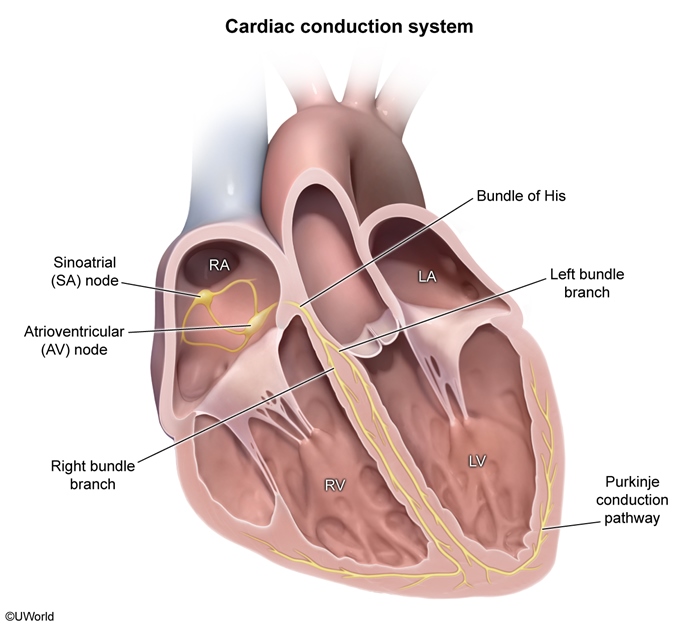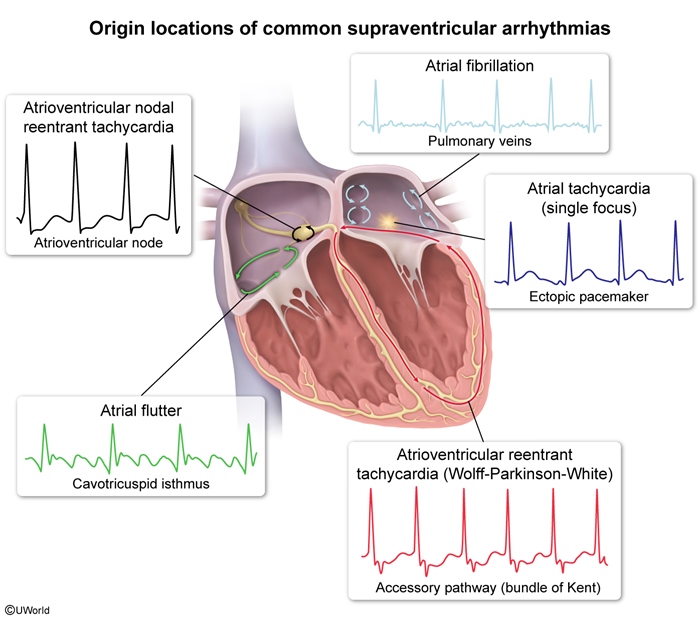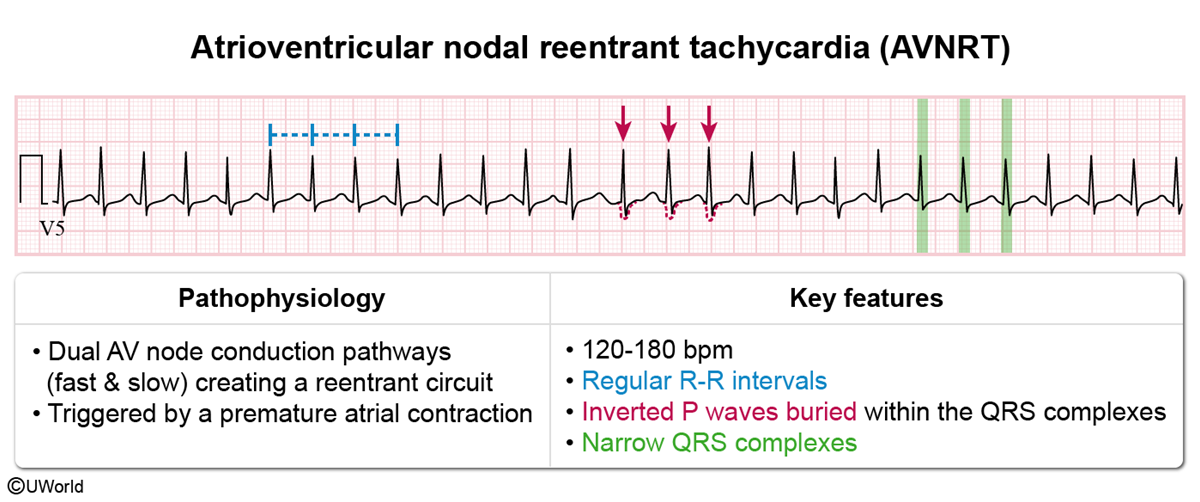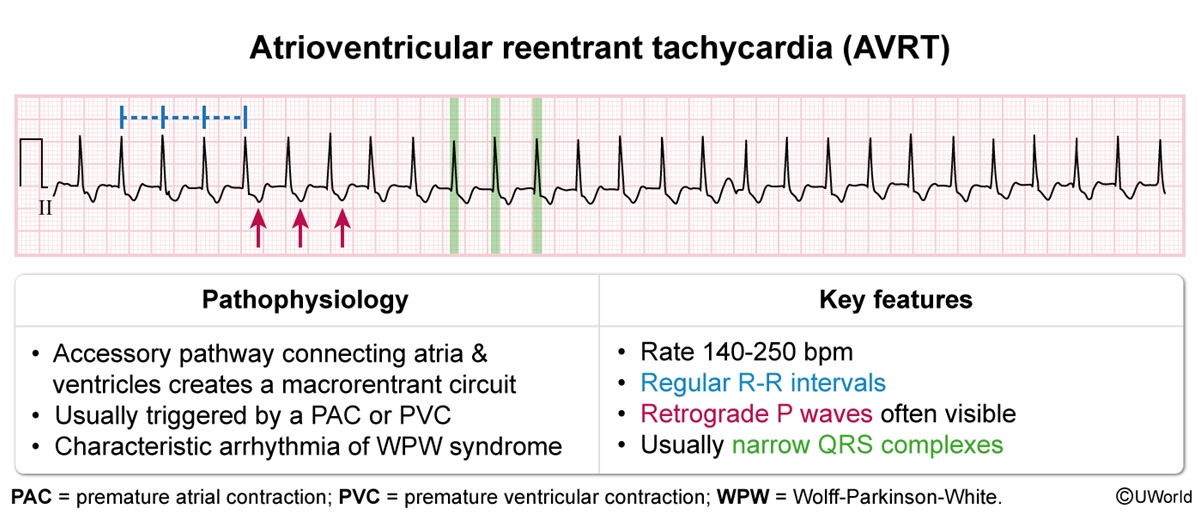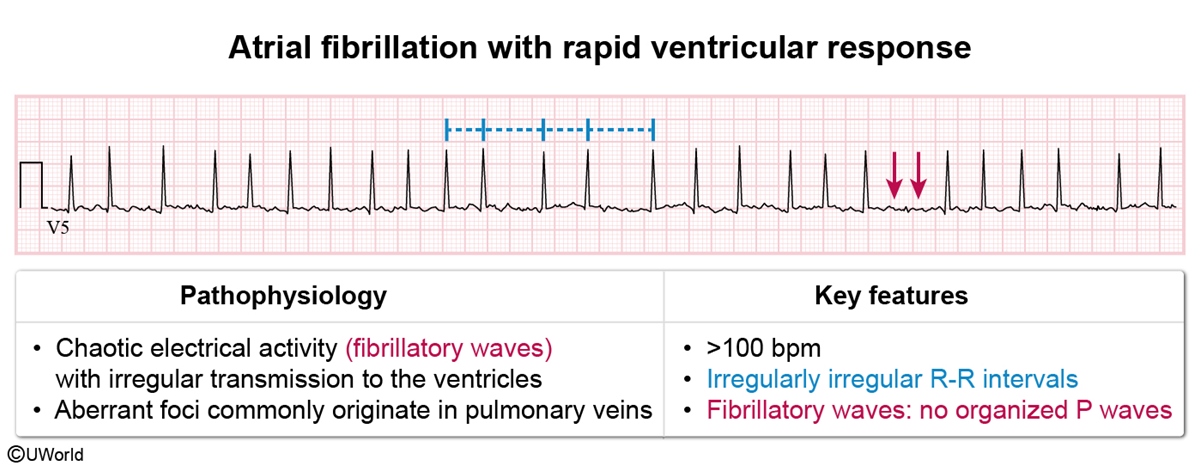Supraventricular Tachycardia
Article Sections
Introduction
Supraventricular tachycardia (SVT) is a broad classification term for tachycardias that originate proximal to the bundle branches and Purkinje fibers in the cardiac conduction system (Figure 1); these arrhythmias may originate within the sinoatrial node, the atria, the atrioventricular (AV) node, or the His bundle. In SVT, the ventricles are usually depolarized normally via the His-Purkinje system, typically resulting in narrow QRS complexes (ie, <120 msec) on ECG.
Pathophysiology and types of SVT
The classification of SVT is somewhat confusing and varies in different resources. In general, tachyarrhythmias reflect a disorder of either impulse generation (eg, ectopic activity) or impulse propagation (eg, abnormal conduction circuit). Using this framework, this article provides a conceptual approach based on the typical point of origin (Figure 2
Continue Learning with UWorld
Get the full Supraventricular Tachycardia article plus rich visuals, real-world cases, and in-depth insights from medical experts, all available through the UWorld Medical Library.
Figures
